In this regular feature, we meet members of the faculty and learn what inspires their teaching and commitment to students at UMF, which was recognized by U.S. News and World Report for Best Undergraduate Teaching among Top Public Colleges in 2019.
In the October 2019 installment of Profiles in Pedagogy, we see and hear from Kevin Good, Assistant Professor of Special Education and the Director of the University’s Center for Assistive Technology — a state resource, funded by a grant from Maine CITE, where the UMF community, area educators, and individuals with disabilities can view assistive technology (AT) devices and receive instruction in the use and evaluation of the equipment.
Words: Kevin Good / Photos: Marc Glass
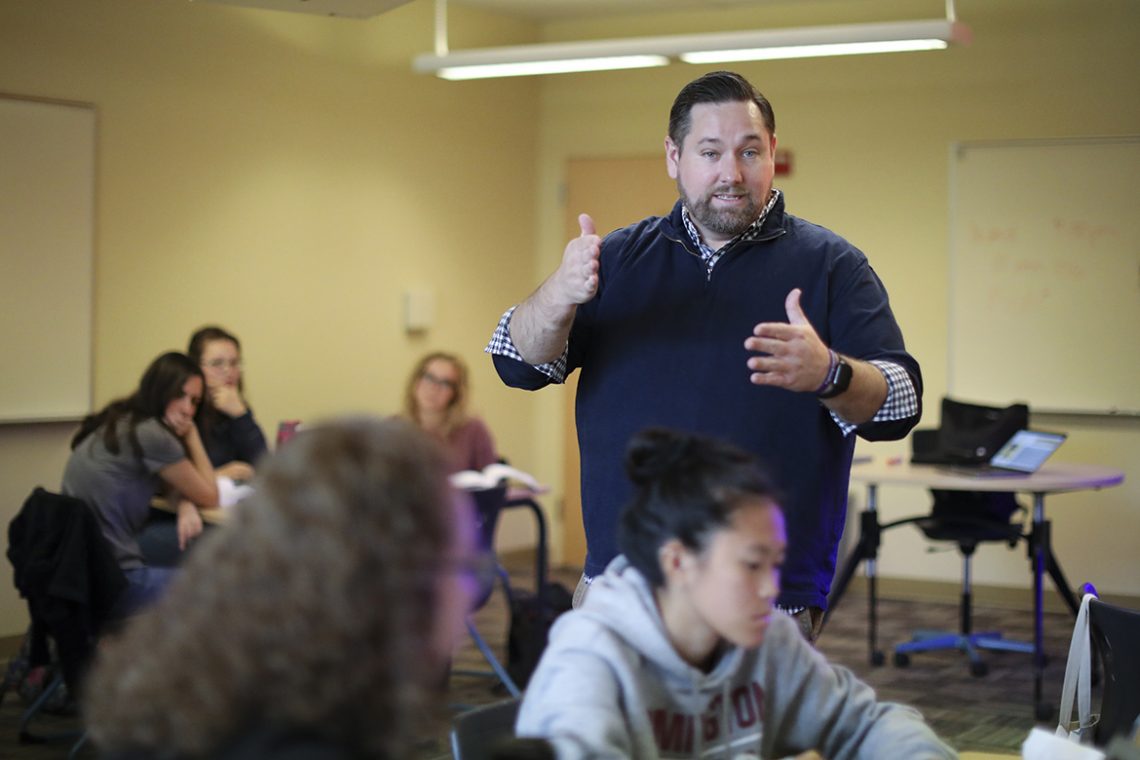
Good guides UMF Education majors in his Assistive & Instructional Technology course through some in-class research based on AT devices from the University’s Center for Assistive Technology collection.
Many readers may not know the role assistive technology can play in the classroom for children with disabilities. What are some examples of how AT can enhance learning opportunities for children with disabilities — and perhaps all children?
First, I think it’s important to understand that Assistive Technology in the United States officially came into fruition with the passage of the American with Disabilities Act (ADA), the Individuals with Disabilities Education Act (IDEA), and the Assistive Technology Act (ATA). Since that time, the law has grown and expanded to cover many things that many may not realize fall under assistive technology, such as telecommunications protocols, closed captioning, website designs, and computer tools.
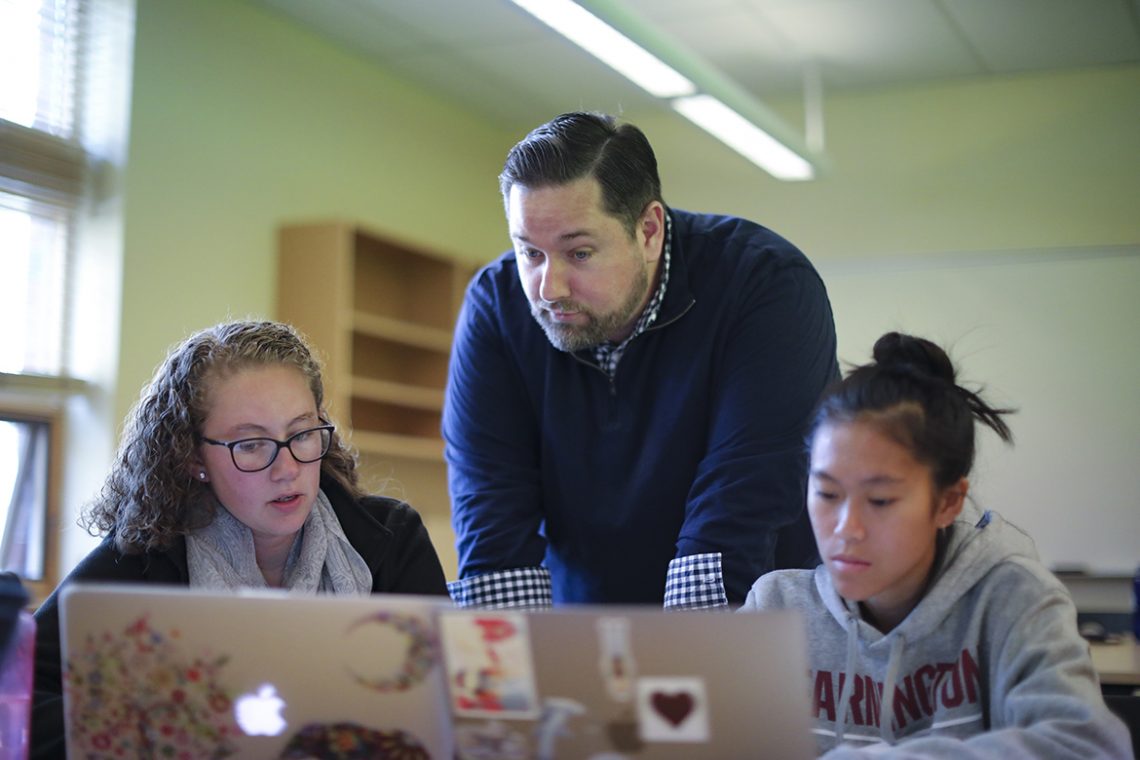
Assistive technology is defined as “any item, piece of equipment, or product system, whether acquired commercially off the shelf, modified, or customized, that is used to increase, maintain, or improve functional capabilities of individuals with disAbilities” (Individuals with Disabilities Act of 1988). And I should note that with “disAbilities,” I’m emphasizing the ability and not the disability. In other words, I see every student as a fully capable learner. It is my job as a teacher to find their strengths and help them leverage those strengths to achieve their goals. In education, Assistive Technology finds its roots in IDEA, requiring Individualized Education Program (IEP) teams composed of students, parents, teachers, administrators, and other professionals to consider Assistive Technology and related services for every student receiving Special Education services. Students with disAbilities should be accessing Assistive Technology items that meet their needs and eliminate barriers to their success in schools as part of their right to a free and appropriate public education (FAPE).
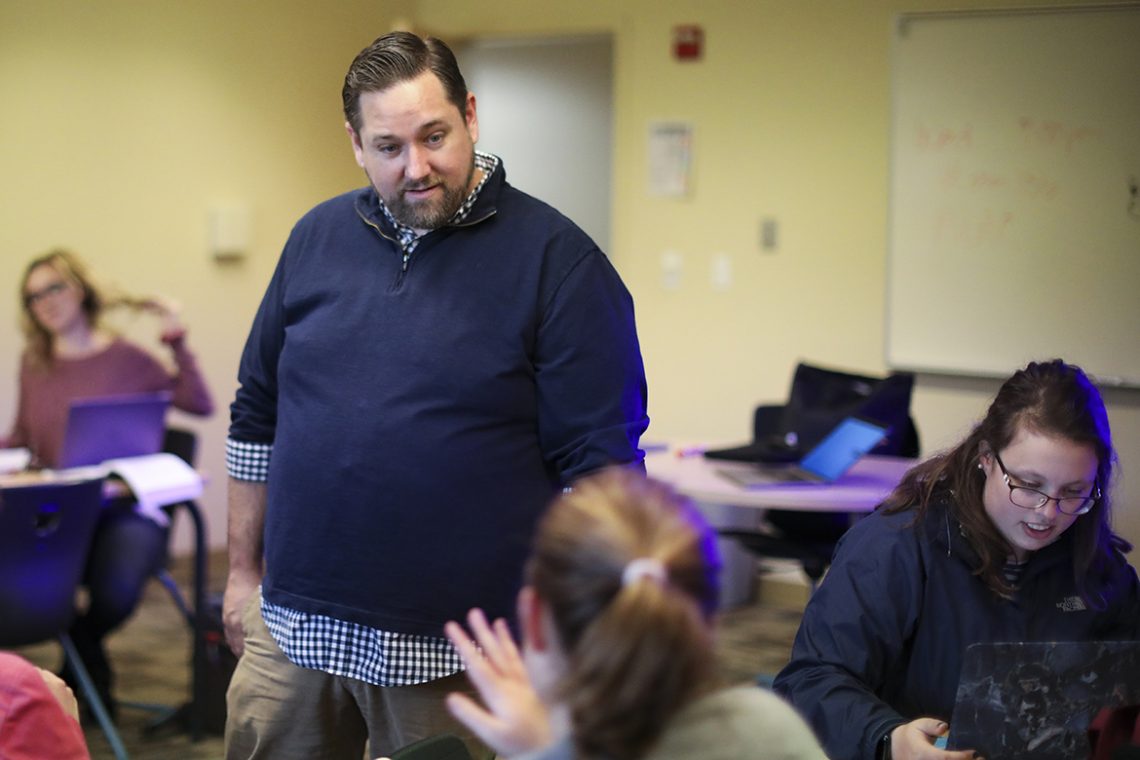
To me, this is when Assistive Technology becomes exciting — the definition implies that everything from the simplest “low tech” items, such as pencil grips and enlarged pencils, to the most sophisticated “high tech” items, such as computers and virtual reality systems, be considered and utilized to benefit student learning. Furthermore, current research on Universal Design for Learning (UDL) Framework (cast.org) is showing how we can leverage Assistive Technology not just for students with disAbilities but for all learners. Today this means re-thinking our curriculum to include tools and features that help every learner be successful whether it is text-to-speech, predictive text, grammar and punctuation support, enhanced etext (e.g., built-in dictionaries), tactile learning tools (e.g., base ten blocks), refreshable braille to so much more. Suffice it to say, Assistive Technology improves the lives of everyone, and I would welcome the opportunity to talk more in-depth about it with anyone curious to learn.
What drew you to specialize in the field of AT?
I was drawn to the field of Assistive Technology from my years of experience as a K–12 Special Education teacher, seeing the needs of all students in inclusive environments. Witnessing these needs taught me to be an advocate and an avid researcher for ways to meet the unique needs of my students in a rural school district that often lacked resources and personnel to meet those needs.
What are some emerging possibilities in AT in education that most excite you?
AT offers a multitude of new and emerging possibilities in education. What I think is most exciting is not about any one particular item, which there are many — for example virtual reality, 3-D printing, robotics — but that Assistive Technology is now becoming mainstream. And by that, I mean that manufacturers of everyday items are becoming more conscious about building products that meet the needs of every individual. You can see evidence of this in everyday computers, tablets, phones, websites, playgrounds, and even personal hygiene items. The world is indeed becoming more accessible for individuals from all walks of life.
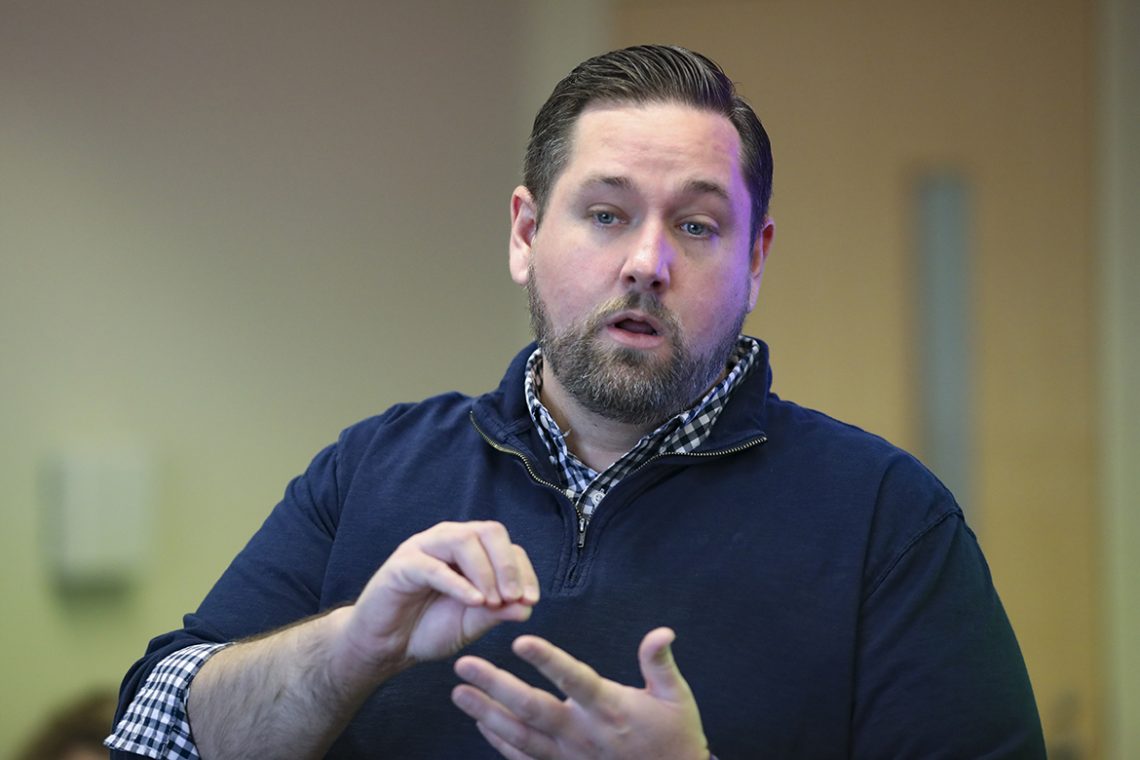
What about teaching at UMF do you find personally and professionally satisfying?
UMF is truly a unique place. When I first stepped foot on the campus a few years ago to interview for an open faculty position, I knew it was the right fit. Fast forward to the present, and I am confident that this is the place that I want to be. We have many fantastic resources on our campus, for instance the Center for Assistive Technology, which is the only one of its type in all of Maine. Along with the other incredible resources on campus, I have had the pleasure of working with the best faculty. However, our students and alumni are who make UMF special. Our students and alumni are “go-getters,” who strive to become the best in their fields, seek answers to perplexing questions, and are committed to making the world a better place.
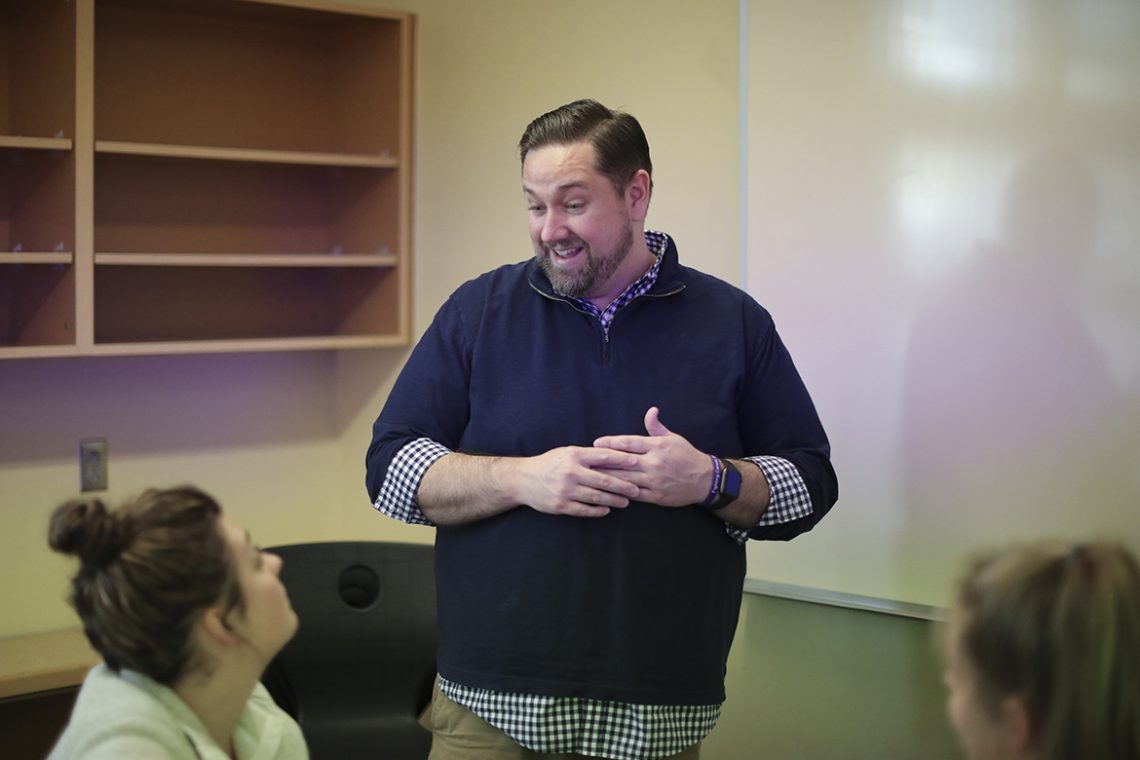
Is there a guiding philosophy you intentionally bring to your teaching at UMF that you hope UMF students will espouse and carry forward to their work in educating children? If so, what is it and how do you model that philosophy for your students?
Teaching is truly art and science combined. For me, each class is an opportunity to create an engaging, thought-provoking, data-driven, and hands-on atmosphere that inspires teacher candidates to be active participants and take ownership of their knowledge. I teach based on a personal mnemonic that I use in designing courses and developing content for a class, which is RISE. RISE stands for the following:
- R — Relate the content to students by activating prior knowledge or providing a framework of reference for new knowledge;
- I — Inspire students to take ownership of the content by creating a welcoming class community that encourages higher-order thinking and accepts students where they are on their journey in gaining knowledge;
- S — State clearly and with examples how the content ties to the class, the degree, and the field of education;
- E — Evaluate student knowledge and growth through multiple means of engagement, which includes hands-on activities, and utilizing these assessments to drive the course content and enhance student understanding.
In following this approach, I intend to help students RISE to meet the expectations of the field of education and be highly qualified, competent teacher candidates and ultimately highly qualified and capable teachers who serve all students regardless of their exceptionality. I hope that my philosophy engages and inspires my students to also work towards helping their future students to RISE and master content one lesson at a time.
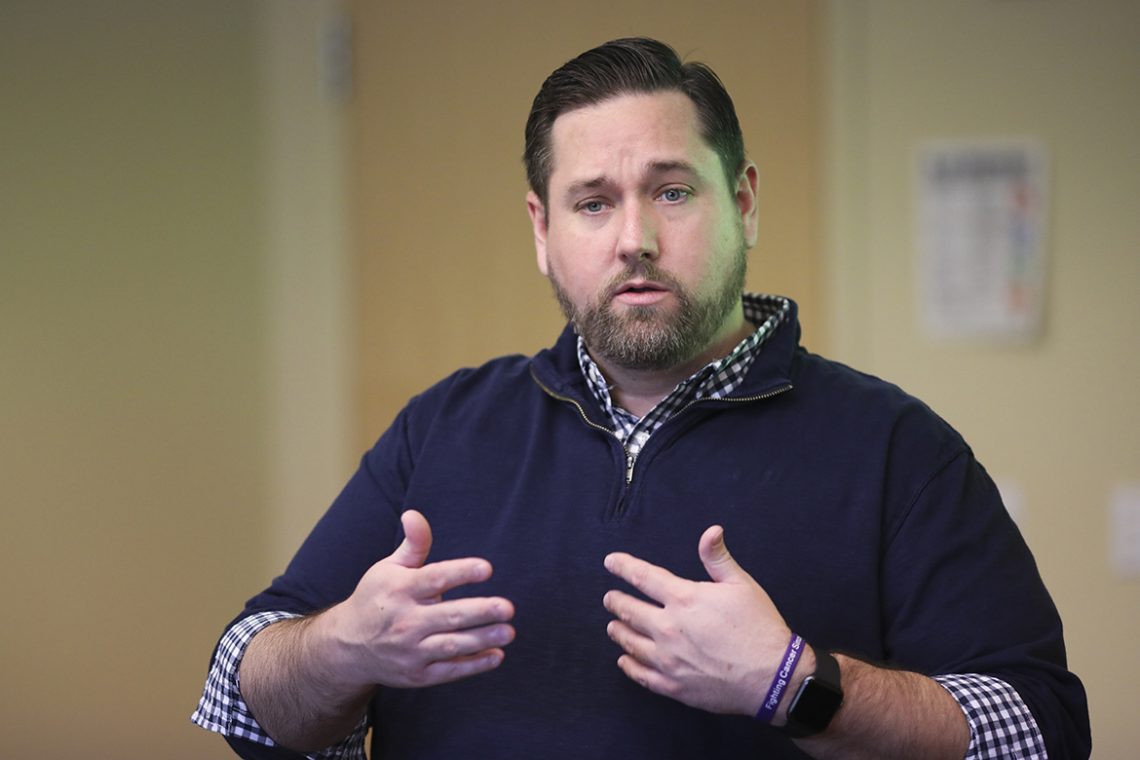
UMF has long been known as a University that supports the field of Special Education by producing well educated and dedicated teachers. What would you say to prospective students who are thinking about majoring in Special Education to encourage them to pursue this path?
First, I would say come and visit us, sit in on a class, and meet our faculty. Once you do, you will see that Special Education at UMF is truly a top-notch program that leverages the latest in evidence and research-based practices and adheres to the highest standards in Special Education Teacher Preparation. Our classes are hands-on, real-world context courses that consistently prepares teacher candidates to meet the needs of not only today’s classrooms but also those of the classrooms of tomorrow. You will experience the latest in technology (e.g., 3-D printing, telepresence robotics, virtual reality), design thinking, and the practical applications of leveraging technology and evidence and research-based practices to help all students learn. You will experience a cohesive program that builds knowledge in meaningful and applicable ways. Most importantly, you will know that the knowledge you gain while being at UMF, in the Special Education program, will serve you well into the future as an educator and advocate for individuals with disAbilities.
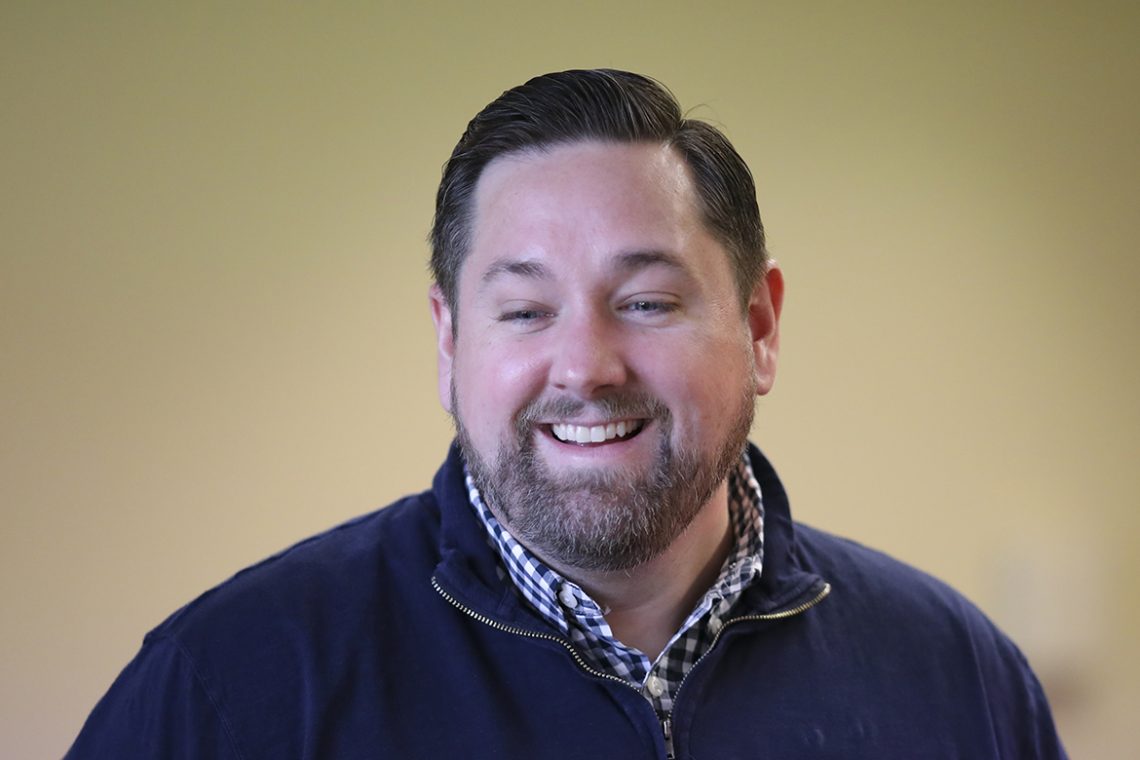
The primary focuses of Good’s teaching and research are AT, inclusive education, teacher education, academic and behavioral instructional interventions, and best practices in instruction and technology use. In addition to presenting to educators across the country and internationally on a variety of topics, including accessibility, writing instruction, computer-based graphic organizers, innovative technology uses in the classroom, and inclusive education practices, Good has served as an editorial assistant for Exceptional Children, one of the leading research publications on Special Education topics.

